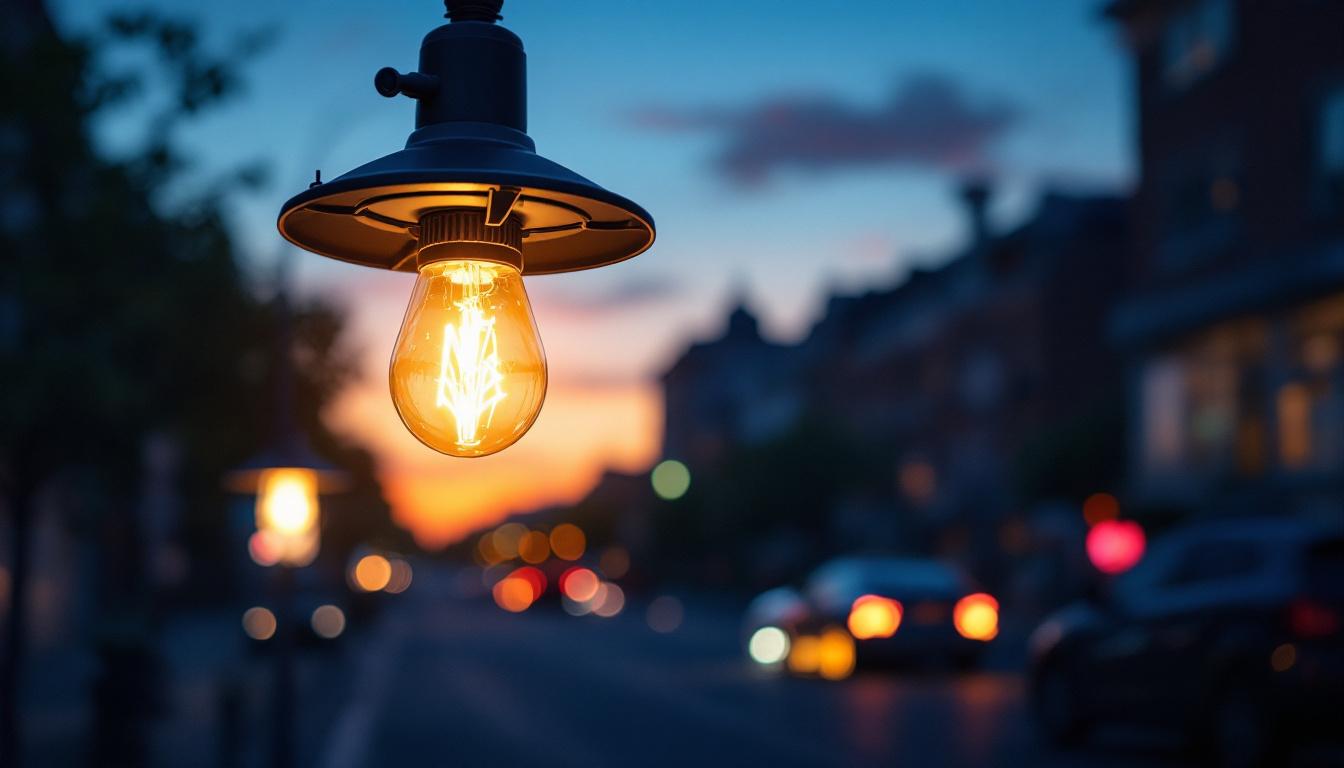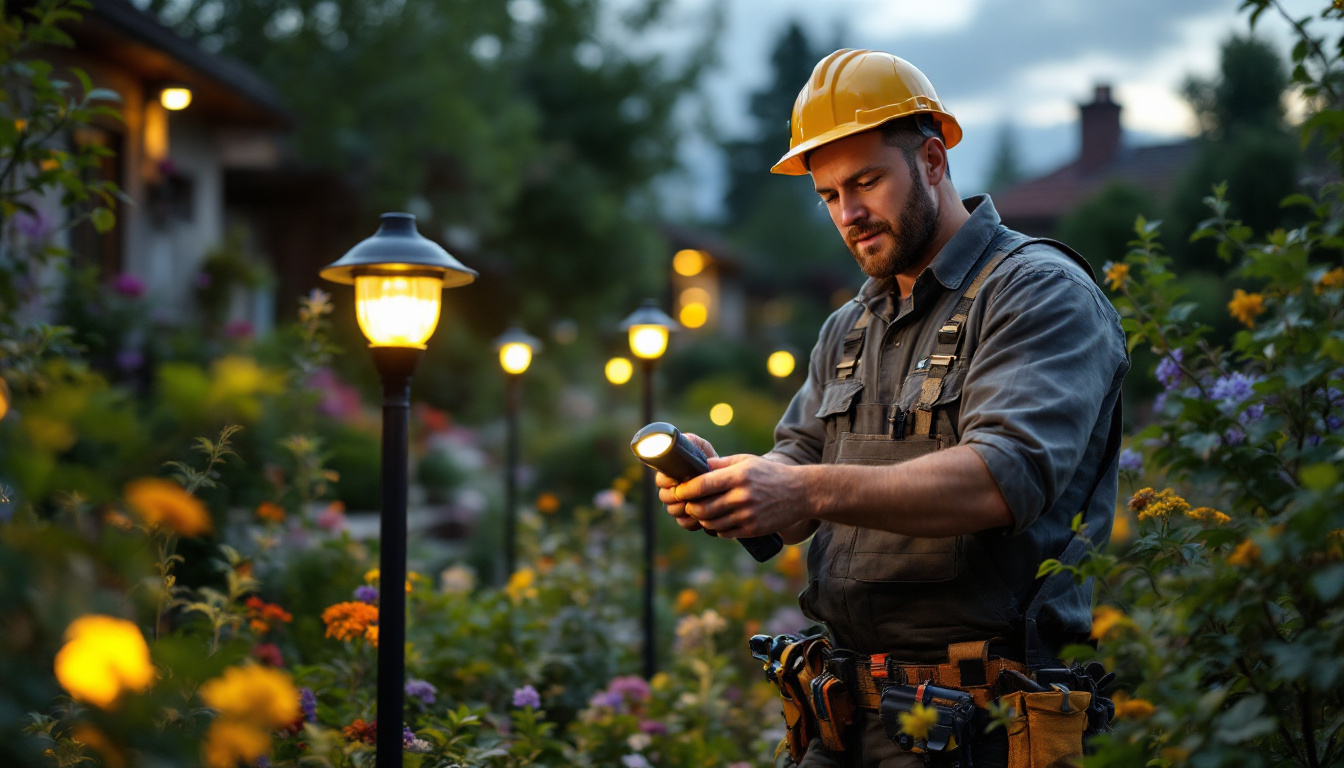
In the realm of urban infrastructure, street lighting plays a crucial role in ensuring safety, visibility, and aesthetic appeal. The choice of street light bulbs directly impacts the efficiency of lighting projects, influencing energy consumption, maintenance costs, and overall performance. As lighting contractors seek to optimize their projects, understanding the nuances of street light bulb technology becomes essential.
When embarking on a lighting project, the selection of street light bulbs is not merely a technical decision; it is a strategic one. The right bulb can enhance visibility, reduce energy costs, and minimize maintenance efforts. Conversely, poor choices can lead to inefficiencies and increased expenses.
One of the most significant advantages of modern street light bulbs is their energy efficiency. Traditional incandescent bulbs have largely been replaced by LED and high-intensity discharge (HID) options, which consume considerably less power. LEDs, for instance, can provide the same lumen output as traditional bulbs while using a fraction of the energy.
By opting for energy-efficient bulbs, contractors can significantly reduce the operational costs of street lighting. This reduction not only benefits municipal budgets but also contributes to broader sustainability goals by lowering carbon footprints. The initial investment in energy-efficient technology often pays off through substantial savings over time. Furthermore, many municipalities are now exploring smart lighting solutions that integrate sensors and adaptive controls, allowing street lights to dim when no one is around, further enhancing energy savings and extending the lifespan of the bulbs.
Another critical factor in selecting street light bulbs is their lifespan. LEDs, for example, can last up to 25,000 hours or more, compared to the 1,000-hour lifespan of traditional incandescent bulbs. This longevity reduces the frequency of replacements, which translates to lower maintenance costs and less disruption in public spaces.
For lighting contractors, this means fewer trips for bulb replacements and repairs, allowing teams to allocate resources more efficiently. Additionally, the reduced need for maintenance can enhance public satisfaction, as consistent lighting is crucial for safety and security in urban environments. Moreover, the durability of modern bulbs often means they are less susceptible to damage from environmental factors, such as extreme weather conditions or vandalism, further ensuring that communities remain well-lit and safe. As cities continue to grow and evolve, the role of reliable street lighting becomes increasingly vital in fostering a sense of security and community well-being.
Understanding the various types of street light bulbs available is essential for making informed decisions that enhance project efficiency. Each type has its unique advantages and ideal applications.
LED street light bulbs have gained immense popularity due to their energy efficiency and long lifespan. These bulbs emit a bright, clear light that improves visibility and safety on roadways and pedestrian pathways. Moreover, LEDs are highly adaptable, available in various color temperatures to suit different environments.
Additionally, LED technology allows for smart lighting solutions, where bulbs can be integrated with sensors and controls to adjust brightness based on real-time conditions. This capability not only enhances energy savings but also contributes to the overall efficiency of lighting projects. Furthermore, LEDs are known for their durability; they are resistant to shock and vibrations, making them ideal for areas prone to harsh weather conditions or heavy traffic. As cities continue to modernize their infrastructure, the transition to LED lighting is often accompanied by the installation of smart city technologies, which can monitor traffic patterns and environmental conditions, further optimizing energy use.
HID bulbs, including metal halide and sodium vapor lamps, have been traditional choices for street lighting. While they provide excellent illumination and are suitable for large areas, they are less energy-efficient than LEDs and have shorter lifespans. However, HID bulbs can still be effective in specific applications, particularly where high-intensity light is required.
Contractors should consider the specific needs of the project when choosing HID bulbs, weighing the benefits against their higher energy consumption and maintenance requirements. For instance, metal halide lamps are often favored in sports complexes and outdoor recreational areas due to their superior color rendering capabilities, which enhance visibility for athletes and spectators alike. On the other hand, high-pressure sodium lamps are commonly used in industrial zones and highways where their warm yellow light can penetrate fog and rain effectively, ensuring safety during adverse weather conditions.
As sustainability becomes increasingly important, solar-powered street light bulbs are emerging as a viable option. These systems harness solar energy to power LED lights, making them an environmentally friendly choice. They are particularly useful in remote areas where extending electrical infrastructure may be challenging.
While the initial costs can be higher, the long-term savings on energy and maintenance can make solar-powered street lights an attractive option for many municipalities. Furthermore, they contribute to a greener image, aligning with modern sustainability initiatives. Many solar street lights come equipped with advanced features such as motion sensors, which can dim the lights when no movement is detected, further conserving energy. Moreover, these systems often include battery storage, allowing for continuous operation even during cloudy days or at night. As technology advances, the efficiency and reliability of solar-powered street lighting continue to improve, making them an increasingly popular choice for urban planners aiming to reduce their carbon footprint and enhance community safety. Additionally, the aesthetic versatility of solar lights allows for creative designs that can blend seamlessly into various landscapes, from parks to urban centers, promoting a cohesive and environmentally friendly urban aesthetic.
The street lighting industry is continually evolving, with technological advancements driving improvements in efficiency and performance. Staying informed about these innovations can help contractors make better choices for their projects.
Smart lighting technology is revolutionizing street lighting by integrating sensors, controls, and connectivity. These systems allow for real-time monitoring and adjustments, optimizing energy use based on actual conditions. For instance, lights can dim during low-traffic periods and brighten during peak hours, significantly reducing energy consumption.
Moreover, smart street lighting can enhance public safety by integrating with surveillance systems and emergency response networks. This added layer of functionality makes smart lighting an attractive option for cities looking to improve safety and efficiency. Additionally, these systems can be equipped with environmental sensors that monitor air quality and weather conditions, providing valuable data to city planners and environmental agencies. This integration not only supports urban sustainability efforts but also fosters a more responsive infrastructure that can adapt to changing environmental conditions.
Adaptive lighting systems take smart technology a step further by using data analytics to predict lighting needs based on historical usage patterns. These systems can adjust lighting levels dynamically, ensuring optimal illumination without wasting energy.
For contractors, implementing adaptive lighting can lead to substantial energy savings and improved project efficiency. Additionally, cities can benefit from reduced light pollution and enhanced nighttime visibility for pedestrians and motorists alike. The ability to tailor lighting to specific areas based on real-time traffic data or community events can also create a more user-friendly urban environment. For example, during festivals or public gatherings, lighting can be adjusted to create a more vibrant atmosphere, while quieter residential areas can maintain a softer glow, thereby enhancing the overall aesthetic of the neighborhood.
Furthermore, the integration of renewable energy sources, such as solar panels, with adaptive lighting systems is gaining traction. This combination not only reduces reliance on traditional power grids but also promotes sustainability by harnessing natural energy. As cities strive to meet their sustainability goals, the push towards renewable energy in street lighting is likely to become a standard practice, paving the way for smarter, greener urban landscapes.
To maximize the efficiency of lighting projects, contractors should adhere to best practices when selecting and implementing street light bulb solutions. These practices can lead to improved outcomes and greater satisfaction for all stakeholders involved.
Before selecting street light bulbs, conducting a comprehensive site assessment is crucial. This assessment should consider factors such as the area’s lighting needs, traffic patterns, and environmental conditions. Understanding these elements allows contractors to choose the most suitable bulb type and placement strategy.
By tailoring lighting solutions to specific site conditions, contractors can enhance visibility and safety while minimizing energy consumption. This strategic approach can also lead to more efficient project execution and reduced costs.
Engaging with local stakeholders, including community members and municipal officials, is vital for successful lighting projects. Gathering input from those who will use the lighting can provide valuable insights into their needs and preferences. This collaboration can lead to more effective solutions and greater public satisfaction.
Moreover, involving stakeholders in the decision-making process can help build support for the project, ensuring smoother implementation and fewer obstacles along the way.
Once the street lighting system is in place, establishing a robust monitoring and maintenance plan is essential. Regular inspections and maintenance can identify potential issues before they escalate, ensuring the lighting remains effective and efficient.
Contractors should consider implementing a proactive maintenance schedule that includes cleaning fixtures, checking for burned-out bulbs, and evaluating the overall performance of the lighting system. This approach can lead to longer lifespans for bulbs and reduced operational costs.
The choice of street light bulbs is a critical factor in the efficiency of lighting projects. By understanding the various options available and implementing best practices, lighting contractors can enhance project outcomes, reduce costs, and contribute to safer, more sustainable urban environments.
As technology continues to evolve, staying informed about innovations in street lighting will empower contractors to make informed decisions that benefit their projects and the communities they serve. By prioritizing energy efficiency, longevity, and stakeholder engagement, contractors can lead the way in transforming urban lighting into a more efficient and effective system.
Ready to elevate your lighting projects with efficiency and sustainability? Look no further than LumenWholesale for a comprehensive range of spec-grade lighting solutions. Our commitment to quality and affordability ensures that you can access the best in street light bulbs and other lighting products at wholesale prices. Say goodbye to middleman markups and hello to hassle-free bulk buying with free shipping. Enhance your urban lighting projects today by visiting Wholesale Lighting at the Best Value and discover how we can help you shine brighter in every endeavor.

Discover the transformative power of LED solar lighting for outdoor projects.

Discover the impact of low profile pot lights on modern lighting projects.
Discover why LED exterior house lights are a game-changer for lighting contractors.

Discover how waterproof wire splices are revolutionizing modern lighting solutions by ensuring durability and safety in both indoor and outdoor environments.